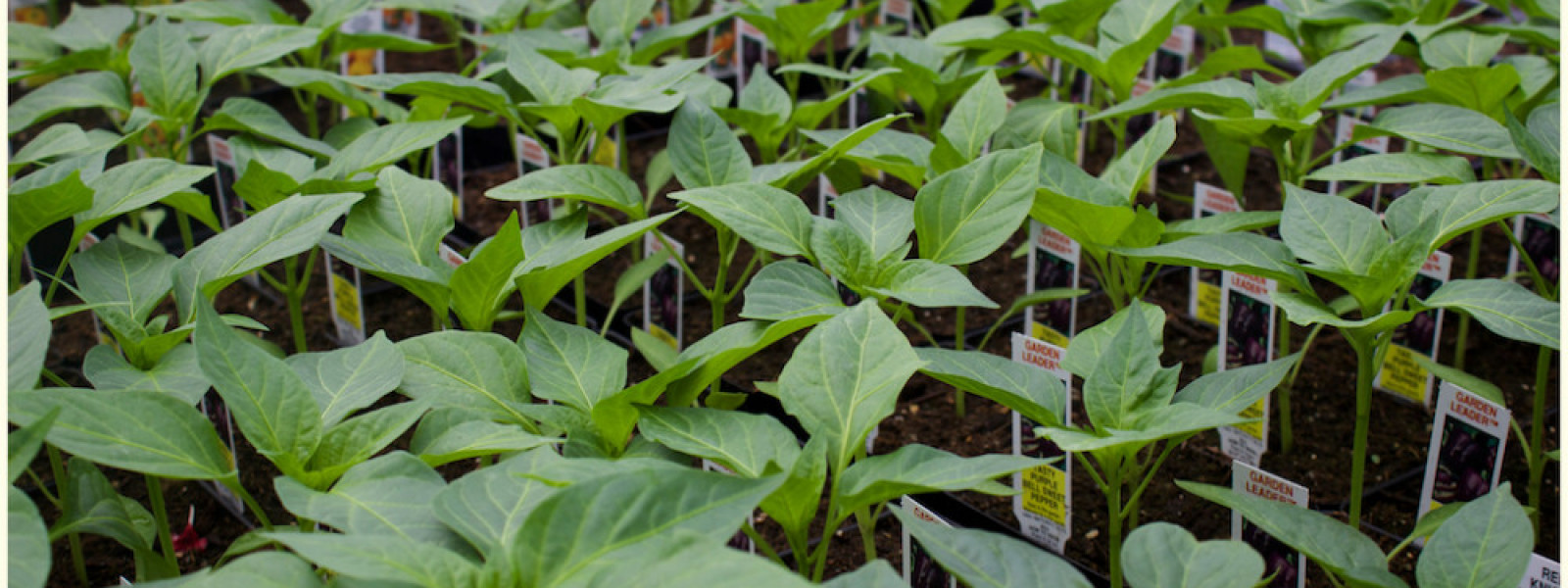Fertilizing Young Plants
Memorial day weekend is traditionally the marker for frost-free days ahead. The old timers will tell you to wait until the first full weekend in June if you are up in the hills. Climate change seems to make it different every year, and slightly earlier each year.
Now is the time to plant the warm weather garden crops like tomatoes, beans, cucumbers, melons, squash, peppers, eggplant, basil, lavender, rosemary, and all the other tender annual flowers, herbs, and veggies. Young bedding plants do best with a fertilizer boost when planting. Read on to learn more about fertilizing young plants.
When you plant your annual vegetable, herb, and flower starts you can give the babies the boost they need to produce a strong root mass to sustain the growth and fruiting of healthy and delicious plants.
- Harden off your plants 2-3 days prior to planting.
- Dig a hole twice the depth and width of the root ball of the plant.
- Fill the hole half way with compost and sprinkle in a tablespoon of ProGro (5-3-4) per 4 cell pack and a 1/4 cup per 4-6” pot. Mix thoroughly into existing soil in the hole. Note: Some herbs and flowers don’t like fertilizer.
- Gently remove plant from the pot with all the soil intact.
- Remove the first set of leaves (these are the bottom-most leaves) and any damaged leaves. You should also remove any flowers and fruit so that the plant can focus on setting roots rather than fruit just yet. On brassicas, the first leaves are called the cotyledons. These are very small and look different than the rest of the leaves. Removing these leaves is not essential, so if you cannot find them don’t worry. They may have already fallen off on their own.
- Settle the plant in to the hole adding just enough dirt to position the plant to the surface level of the soil. Don’t fill the hole yet. Most plants can be planted deeper than you receive them and this can help the plant to produce more roots and a stronger stem. For most vegetables you can plant right up to the (removed) first leaves or cotyledon leaves and for most flowers and herbs you can plant to the same depth they were received as bedding plants.
- Fill the hole with water and let it drain completely. Do that again.
- Fill in the hole with the remaining soil. Gently pat the soil down, not too hard as you do not want compacted soil.
- Water the plant in with fish fertilizer, diluting to 1/4 cup per gallon. We recommend using Organic Gem liquid fish fertilizer.
- If the plant will need staking later, insert the stakes now. Remember to think about what the plant will look like in August and choose the height and thickness of your stakes accordingly.
Interested in learning more? The Grower’s Library at Johnny’s Selected Seeds may have the information you’re looking for.

